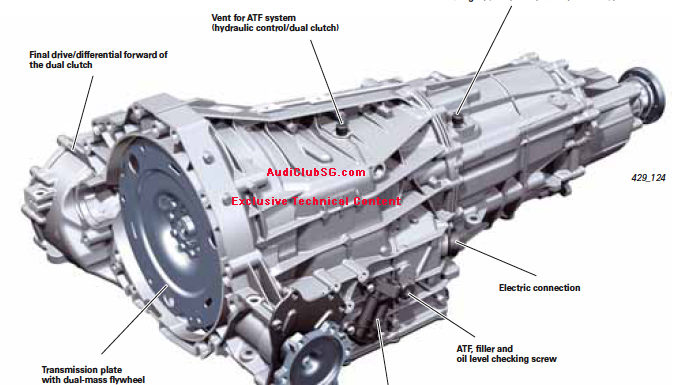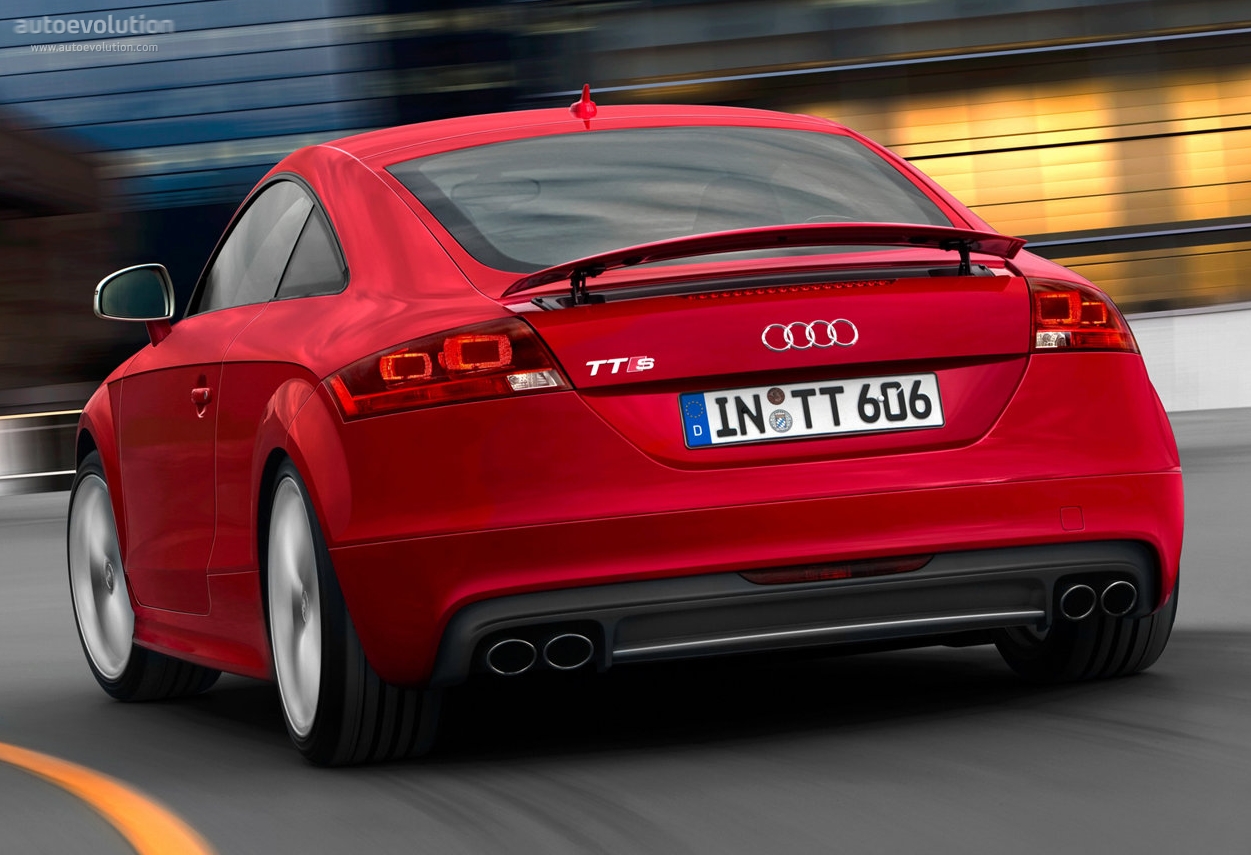Audi A4 Enter the car make and car model for which you want to see an overview of gearbox codes. In the overview, you will then get a list of the gearbox codes with the years of construction and engine capacity of the associated engine. If there is a match with other car makes and car models, these will also be shown in the overview. Audi Miscellaneous Enter the car make and car model for which you want to see an overview of gearbox codes. In the overview, you will then get a list of the gearbox codes with the years of construction and engine capacity of the associated engine. If there is a match with other car makes and car models, these will also be shown in the overview.

— Audi DSG (direct-shift gearbox) transmission problems have caused a lawsuit that alleges 2010-2014 Audi S4, S5, S6, S7 and RS5 vehicles are defective.
The class action says the DSG transmissions cause sudden rough shaking and violent jerking when drivers accelerate and shift into 2nd, 3rd or 4th gear. The lawsuit also alleges the vehicles shudder and judder when a driver slows down.
The plaintiffs futher claim the direct-shift gearbox transmissions hesitate during acceleration, surge while driving and experience rough downshifts when drivers decelerate and accelerate.
According to the lawsuit, the vehicles are too dangerous to drive, especially due to the allegedly sudden acceleration and deceleration problems.
In addition, the plaintiffs claim Audi knew about the transmission problems but continued to sell and lease the vehicles without informing customers about the issues.
The DSG class action references technical service bulletins (TSBs) related to the transmissions, with one bulletin that admitted customers were complaining about “[c]lacking or knocking noises.” However, the TSB said that “[s]uch noises cannot be avoided and are normal.”
Another TSB was issued to dealers in July 2013 that talked about “[r]ough gear changes, both when accelerating and when slowing down” and “rough driving power disruption[s].” The bulletin went on to tell dealers that “sporadic driving power disruptions” were “normal, and these issues will decrease over time.”
Another transmission TSB recommended that Audi dealers use an “improved circuit board for the mechatronics unit.”
All four named plaintiffs claim their DSG transmissions suffered from problems, with three of the Audi owners alleging they took the vehicles to dealerships but had no transmission repairs or replacements that fixed the issues.
The Audi DSG transmission lawsuit was filed in the U.S. District Court for the Northern District of California - Mandani, et al., v. Volkswagen Group of America, Inc., et al.
The plaintiffs are represented by Simmons Hanly Conroy, Whitfield Bryson Mason, and Greg Coleman Law.
Automatic gearboxes vary widely in design and performance, and knowing what type your car has can be tricky. We’re here to help you tell your CVT from your DSG...
Automatic gearboxes aren’t exactly new. In fact, it could be argued that the very first production car, the 1886 Benz Patent Motorwagen, had one; it certainly didn’t have a clutch pedal. What’s certain, though, is that they’re now offered in any kind of car you could mention.
In fact, last year cars with automatic gearboxes outsold manual models for the first time. Of the 1.63 million new cars registered in the UK, 915,812 were automatics; that’s 56% of the total. And with electric and hybrid cars making up many of the best sellers, it’s evident that the automatic takeover is only just getting started.
There are other reasons why car makers are falling out of love with manual gearboxes. They cost a lot to develop at a time when demand is diminishing, and they are no longer necessarily greener or more fuel efficient than automatics – partly because the latter can be controlled by computer to change gear at precisely the right time to achieve the best economy and lowest emissions.
But while every automatic gearbox does basically the same thing, there is a baffling array of different types. And with manufacturers dreaming up brand names for their own particular offerings, it’s becoming rather confusing to work out what’s what. So, read on for our guide to the mysterious world of effort-free cog-swapping.
Torque converter automatic
Also known as Geartronic, G-Tronic, Steptronic, Tiptronic, ZF 8-speed
For Reliable and time-proven; usually smooth and quiet

Against Not particularly efficient; can be sluggish; sometimes pricey to buy
This is the traditional automatic gearbox that you would have found in pretty much every car without a clutch pedal 30 years ago. And it’s still very common today, particularly in executive and luxury cars, such as the BMW 7 Series as well as many larger SUVs.
The term ‘torque converter’ refers to the component that transmits power from the engine to the gearbox itself – like the clutch does in a manual car. But rather than having an actual, physical connection, as is the case with a clutch, the torque converter uses thick hydraulic fluid to transfer drive from the engine to the gearbox. It’s this fluid link that enables torque converter automatic set-ups to change gear smoothly.

This technology has been around for long enough to have been made very dependable. The downside is that the torque converter isn’t actually a very efficient way of transferring the engine’s power. As a result, this type of gearbox can be a little heavier on fuel than others, and the way it operates can give rise to tardy gearchanges.
You can still take control yourself, though; many systems provide the option to select gears manually, either using the gear selector or paddles behind the steering wheel. However, you’re rarely acting on the gearbox directly; you’re just giving it an electronic command. Some are more immediately obedient than others, but they mostly do what you ask.
Dual-clutch automatic
Also known as Direct-shift gearbox (DSG), dual-clutch transmission (DCT), PowerShift, S tronic, Porsche-Doppelkupplungsgetriebe (PDK)
Audi Gearbox Codes List
For Very quick to change gear; quite fuel efficient
Against Can be jerky in use; mechanical complexity can make repairs expensive
Dual-clutch automatic gearboxes began to appear in road cars in 2003, notably in the Audi TT and Volkswagen Golf R32, and can now be found in all classes of cars, from small hatchbacks such as the Volkswagen Polo to the likes of the Porsche 911 sports car.
In fact, a growing number of new cars are available only with a dual-clutch ’box, including the mild hybrid versions of the Seat Leon and Volkswagen Golf. Part of the reason is that they’re very efficient. However, they’re also very complicated.
They work on a similar principle to a single-clutch automated manual (more about which later) but, as the name suggests, use two clutches.The idea is that they can line up the gear they think you’re going to need next on one clutch while the other is still being used to drive the car, and this enables extremely quick gearchanges.
However, because of how they work, dual-clutch automatics tend to be jerkier than torque converter units at lower speeds. They can also be a bit too keen to get into the higher gears quickly, leaving the car in the wrong gear to provide the best acceleration for overtaking. However, to help counter this, most also allow the driver to change gear manually, often with shift paddles behind the car’s steering wheel.
Their complexity is another downside; in recent years, older units have gained a reputation for poor reliability and some owners have reported theirs as needing costly repair work.
CVT automatic
Also known as e-CVT, Xtronic
For Mechanically simple and reliable; fuel efficient
Against Tends to be noisy; can be sluggish; little scope for manual control
The continuously variable transmission (CVT) is unusual in that it doesn’t use a series of cogs for gears like a traditional gearbox. Instead, it works a bit like the gears on your bicycle.
Inside a CVT gearbox you’ll find two cone-shaped pulleys – one connected to the engine and the other driving the wheels, linked by a belt. The pulleys expand and contract in diameter continuously as you accelerate or decelerate, and that alters the gear ratio.
Because the gearing is adjusted infinitely between the highest and lowest ratio, the engine is kept in its power band when you accelerate, rather than dropping in and out of the engine’s most efficient rev range, as is the case with other types of gearbox. What’s more, because there are no fixed gears, there are no gearchanges – and that means smooth acceleration without any jolts.
Audi Gearbox Oil Change
However, the downside is that, because the engine is held at peak power as you accelerate (normally at higher revs), CVT gearboxes can make cars rather noisy, especially if the engine is a bit weedy and needs to be revved harder to pull you along.
Toyota uses a more sophisticated gearbox, called e-CVT, in the Prius hatchback and RAV4 SUV, that replaces the belt and pulleys with two electric motor-generators. One is used to start the engine and act as a generator to charge the hybrid battery, while the other acts as a drive motor on its own or in conjunction with the engine. The system also enables the car to be driven in pure electric mode by mechanically decoupling the petrol engine.
For all the latest reviews, advice and new car deals, sign up to the What Car? newsletter here
Next: more types of automatic gearbox >>

Page 1 of 2
